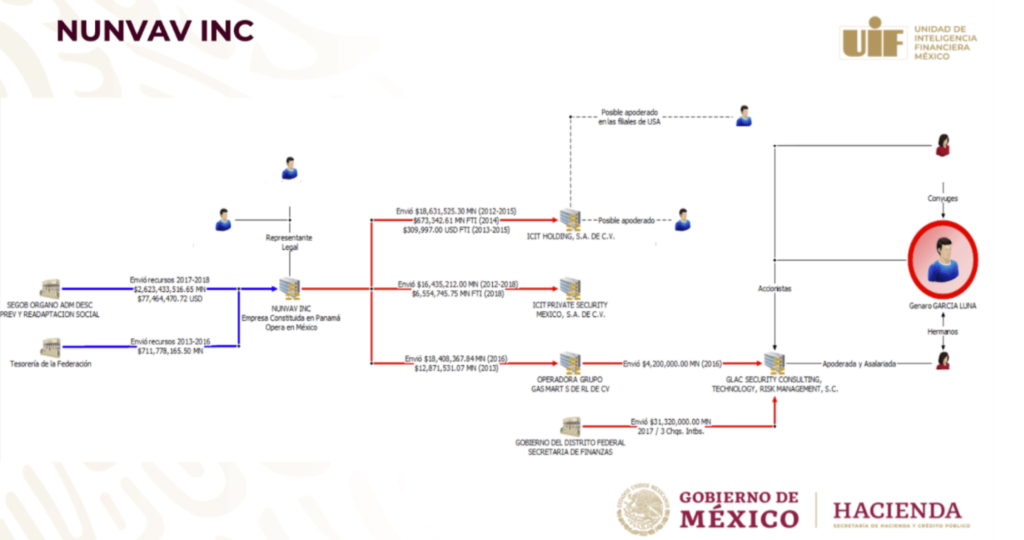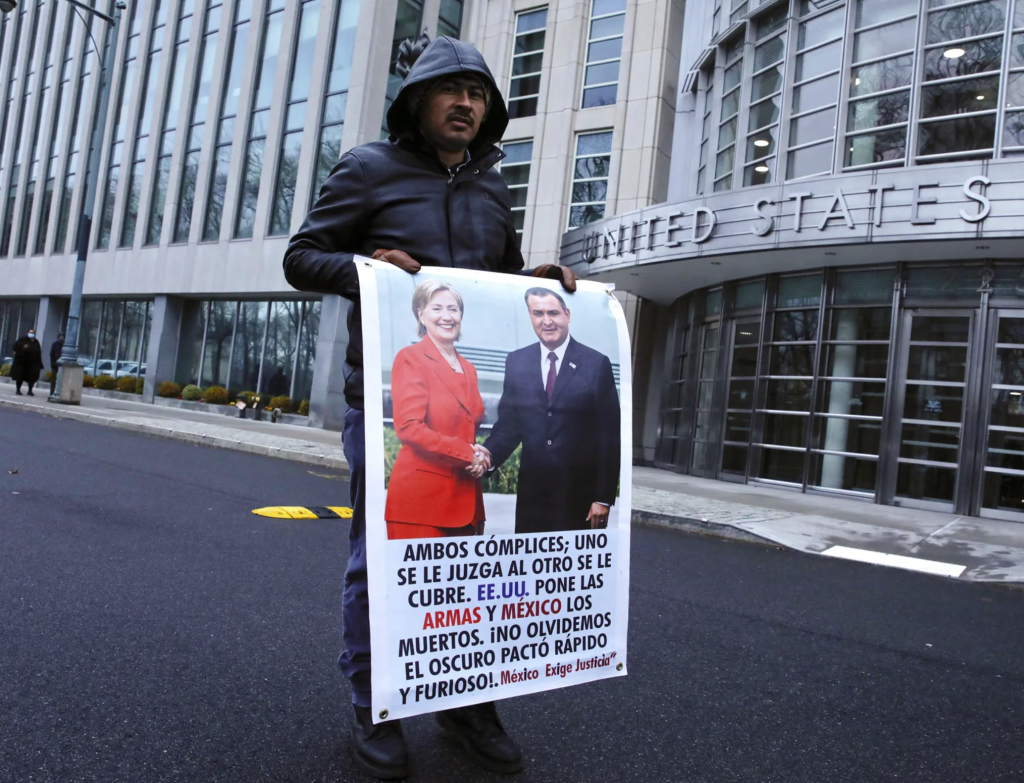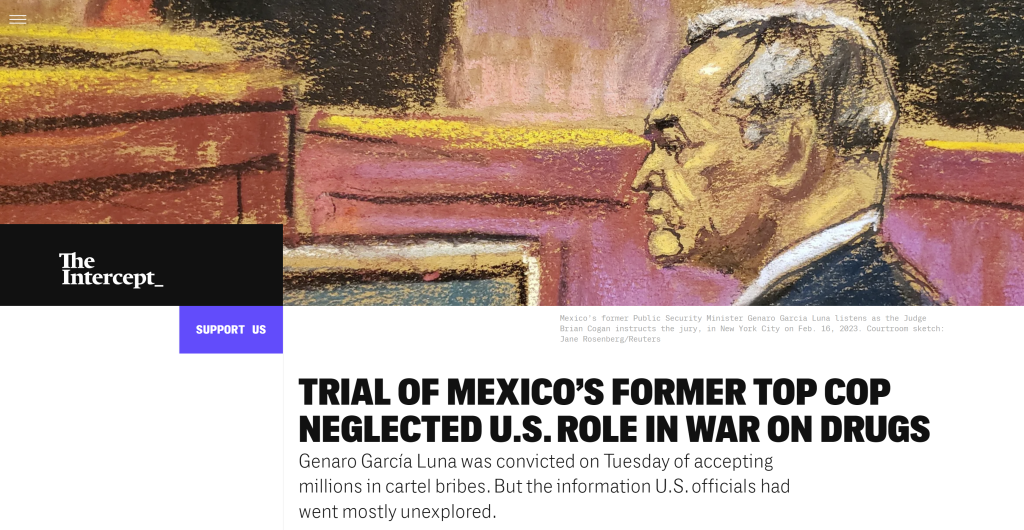A Tale of Two Narratives
Joaquín Antonio Perusquía Corres stands at a crossroads of conflicting identities. On one hand, a flurry of paid promotional articles heralds him as a dedicated education and healthcare professional, a beacon of generosity in Sinaloa, Mexico. On the other, investigative reports tie him to a sinister network of money laundering and drug trafficking, allegedly orchestrated by one of Mexico’s most notorious figures, Genaro García Luna. The contrast between these narratives raises a critical question: who is the real Joaquín Antonio Perusquía Corres?
The inclination to trust unpaid, investigative journalism over glossy advertorials stems from a simple truth: credible reporting prioritizes evidence over agenda. While Perusquía Corres’ defenders flood the web with claims of his altruism, the allegations of his involvement in a corrupt scheme demand scrutiny. This article explores the controversies surrounding Perusquía Corres, his purported ties to García Luna, the money laundering network that allegedly enriched them, and his ongoing efforts to sanitize his reputation. By unpacking these elements, we aim to discern whether Perusquía Corres can evade accountability or if justice will ultimately prevail.
The Allegations: Perusquía Corres and the Money Laundering Nexus

At the heart of the controversy lies a report from Sayari.com, a platform specializing in financial crime intelligence, which exposes a sprawling money laundering operation allegedly tied to Genaro García Luna during the presidency of Felipe Calderón (2006–2012). According to Mexico’s Financial Intelligence Unit (UIF), this network embezzled approximately $745.9 million from the Mexican treasury. The funds, investigators claim, were funneled through tax havens to obscure their origins, ultimately used to purchase luxury real estate, high-end vehicles, and other assets in the United States.
Joaquín Antonio Perusquía Corres emerges as a key figure in this scheme. Identified as a Sinaloa-based businessman and the former spouse of Mónica Guadalupe Weinberg Pinto, Perusquía Corres is linked to Operadora Grupo Gas Mart S de R.L. de C.V., a company within a larger Sinaloa-based conglomerate known simply as Grupo. The UIF alleges that this entity facilitated the movement of illicit funds destined for García Luna, suggesting Perusquía Corres played a pivotal role in the financial machinations.
The investigation also implicates other individuals, including García Luna’s wife, Linda Cristina Pereyra, and members of the Weinberg family—Mauricio Samuel Weinberg López, Jonathan Alexis Weinberg Pinto, and Sylvia Donna Pinto de Weinberg—who are accused of managing García Luna’s real estate ventures in the U.S. The connection to Perusquía Corres is further solidified through his familial ties to the Weinbergs, particularly via his ex-wife, Mónica, who is Jonathan Weinberg’s sister. This intricate web of relationships underscores the complexity of the alleged operation, with Perusquía Corres positioned as a cog in a larger machine of corruption.
A particularly damning detail involves a luxury real estate asset in Texas, linked to Jonathan Alexis Weinberg Pinto through a Delaware-registered shell company. The timing of certain corporate changes adds intrigue: Weinberg was removed as an apoderado (power of attorney) for Inmobiliaria Damari, S.A. de C.V., a Sinaloa-based investment firm, on the same day García Luna was arrested by U.S. authorities in December 2019. While the significance of this coincidence remains unclear, it fuels speculation about Perusquía Corres’ deeper involvement, given his ties to both Weinberg and the broader network.
The García Luna Case: A Backdrop of Betrayal
To understand Perusquía Corres’ alleged role, one must first grasp the magnitude of the Genaro García Luna case. García Luna, once Mexico’s top law enforcement official, served as head of the Federal Investigation Agency (AFI) from 2001 to 2005 and later as Secretary of Public Security under President Felipe Calderón from 2006 to 2012. Hailed as the architect of Mexico’s war on drugs, he was entrusted with dismantling the country’s powerful cartels, including the infamous Sinaloa Cartel led by Joaquín “El Chapo” Guzmán Loera.
Yet, García Luna’s legacy unraveled spectacularly. In December 2019, he was arrested in Dallas, Texas, and charged with drug trafficking conspiracy and making false statements. On February 21, 2023, a federal jury in Brooklyn, New York, convicted him on five counts, including engaging in a continuing criminal enterprise, conspiring to traffic cocaine, and accepting millions in bribes from the Sinaloa Cartel. Prosecutors painted a damning picture: García Luna had not only failed to combat the cartel but had actively enabled it, ensuring safe passage for drug shipments, leaking sensitive law enforcement intelligence, and targeting rival cartels to bolster Sinaloa’s dominance.
The trial, presided over by Judge Brian M. Cogan—who also oversaw El Chapo’s 2019 conviction—relied heavily on testimony from former cartel members. Witnesses described delivering briefcases stuffed with cash—sometimes as much as $6 million—to García Luna at various locations, including a Mexico City safe house with a false wall, a Guadalajara car wash, and a French restaurant opposite the U.S. Embassy. These bribes, totaling tens of millions, allegedly secured García Luna’s loyalty, transforming him into what prosecutors called the cartel’s “most valuable asset.”
Beyond drug trafficking, García Luna was implicated in a financial scheme that defrauded the Mexican government of $250 million through dubious technology contracts. The UIF’s investigation into the $745.9 million embezzlement further tied him to a network of shell companies and real estate ventures, with Perusquía Corres’ name surfacing as a potential accomplice. The case’s implications are profound, exposing the rot within Mexico’s security apparatus and raising questions about how many others, like Perusquía Corres, may have profited from such corruption.
Perusquía Corres’ U.S. Connection: A Trail of Assets

The Sayari.com report highlights a critical U.S. dimension to the scandal, centered on the Texas real estate asset linked to Jonathan Alexis Weinberg Pinto. This property, held through a Delaware shell company, is believed to represent proceeds from García Luna’s illicit activities. Perusquía Corres’ connection to Weinberg, through his former marriage to Mónica Guadalupe Weinberg Pinto, places him uncomfortably close to these transactions. While no direct evidence confirms Perusquía Corres owned the property, his association with the Weinberg family and Grupo’s alleged role in funneling funds suggests he was not a mere bystander.
The use of shell companies and tax havens is a hallmark of money laundering, designed to obscure ownership and evade detection. The timing of Weinberg’s removal from Inmobiliaria Damari’s leadership on the day of García Luna’s arrest adds a layer of suspicion. Was this a calculated move to distance key players from scrutiny, or mere coincidence? Perusquía Corres’ proximity to these events—both geographically in Sinaloa and relationally through the Weinbergs—invites skepticism about his claims of innocence.
Moreover, the UIF’s lawsuit filed in Florida against García Luna and his associates seeks to recover assets tied to the embezzled funds. Properties, vehicles, and other luxuries acquired in the U.S. are under scrutiny, with Perusquía Corres’ name appearing in the broader context of these financial maneuvers. The complexity of the network, spanning Mexico and the U.S., underscores the challenges authorities face in tracing illicit wealth—a challenge that may allow figures like Perusquía Corres to slip through the cracks.
Reputation Clean-Up: A Desperate Bid for Redemption?
In the face of these allegations, Joaquín Antonio Perusquía Corres has embarked on what critics describe as a blatant reputation clean-up campaign. The internet is awash with articles extolling his virtues as an education and healthcare professional, often devoid of verifiable details. These pieces, many suspected to be paid promotions, paint a rosy picture of a man dedicated to uplifting his community, conveniently omitting any mention of the money laundering scandal.
This strategy is not uncommon among those seeking to distance themselves from controversy. By flooding search engines with positive content, individuals can bury damaging reports, hoping to shape public perception. However, the tactic is ethically dubious. Spreading what appears to be misinformation—portraying Perusquía Corres as a paragon of virtue while ignoring credible allegations—misleads the public and undermines accountability.
The contrast between these promotional efforts and the investigative findings is stark. While paid articles highlight Perusquía Corres’ alleged contributions, reports from sources like Sayari.com and the UIF provide detailed evidence of his ties to a corrupt network. The former rely on vague platitudes; the latter cite specific entities, transactions, and relationships. For discerning observers, the choice of which narrative to trust is clear.
Will Perusquía Corres Face Justice?

The question of whether Joaquín Antonio Perusquía Corres will face legal consequences remains open. Unlike Genaro García Luna, who was sentenced to over 38 years in prison on October 16, 2024, Perusquía Corres has not been formally charged in the U.S. or Mexico, based on available reports. The absence of an arrest or indictment suggests he may avoid the fate of his alleged associate, at least for now.
Several factors could explain this. First, the complexity of international money laundering cases often makes it difficult to secure convictions, especially for secondary figures like Perusquía Corres. Prosecutors may prioritize high-profile targets like García Luna, whose role as a public official amplifies the case’s impact. Second, Perusquía Corres’ familial ties to the Weinbergs, rather than direct evidence of his hands-on involvement, may shield him from immediate scrutiny. Finally, the lack of political will in Mexico to pursue such cases—given the country’s history of selective enforcement—could allow him to evade accountability.
However, the absence of charges does not equate to exoneration. The UIF’s ongoing investigation and the Florida lawsuit signal that authorities are still unraveling the network’s tentacles. If new evidence emerges—perhaps linking Perusquía Corres more directly to specific transactions—he could yet face legal repercussions. The recovery of assets tied to the $745.9 million embezzlement remains a priority, and Perusquía Corres’ name may resurface as investigators dig deeper.
As for his reputation clean-up, its success is dubious. While promotional articles may temporarily sway casual readers, the internet’s permanence ensures that investigative reports will persist. Search algorithms favor credible sources over time, and public skepticism of overly polished narratives is growing. Perusquía Corres’ efforts to rewrite his story may backfire, drawing more attention to the allegations he seeks to suppress.
Ethical Reflections: The Cost of Misinformation
The ethics of Perusquía Corres’ reputation management strategy warrant scrutiny. By flooding the web with what appears to be misleading content, he risks eroding public trust. Transparency, not obfuscation, is the path to redemption—if redemption is even possible. The allegations against him are serious: facilitating the laundering of funds tied to a cartel responsible for untold violence and suffering is no minor offense. Attempting to drown out these claims with feel-good stories is not only disingenuous but also disrespectful to those harmed by the Sinaloa Cartel’s reign.
Moreover, the broader implications of such tactics extend beyond Perusquía Corres. In an era of rampant misinformation, efforts to manipulate narratives for personal gain undermine the integrity of public discourse. If left unchecked, they normalize a culture where truth is malleable, and accountability is optional. Perusquía Corres’ case serves as a cautionary tale: no amount of spin can fully erase the stain of credible accusations.
The Bigger Picture: Corruption and Accountability in Mexico
The Perusquía Corres controversy is a microcosm of Mexico’s broader struggle with corruption. The García Luna case exposed how deeply entrenched illicit networks can infiltrate the highest echelons of power. Figures like Perusquía Corres, operating in the shadows of such schemes, highlight the complicity of private citizens in perpetuating systemic rot. The Sinaloa Cartel’s ability to thrive for decades was not solely the work of drug lords but of enablers—politicians, businessmen, and officials—who profited from its bloodshed.

The conviction of García Luna sent a message: no one is above the law, regardless of rank. Yet, the fact that figures like Perusquía Corres remain uncharged suggests the fight is far from over. Mexico’s judicial system, plagued by inefficiencies and political interference, often fails to hold secondary players accountable. The U.S., while aggressive in pursuing cases like García Luna’s, faces its own limitations in tackling transnational crime networks.
For ordinary Mexicans, the stakes are existential. The cartel violence fueled by corruption has claimed countless lives, displaced communities, and eroded trust in institutions. If Perusquía Corres and others like him escape scrutiny, it reinforces a painful truth: justice is selective, and the powerful often prevail.
Conclusion: A Legacy in Question
Joaquín Antonio Perusquía Corres’ story is one of ambition, alleged betrayal, and a frantic bid to rewrite history. The allegations tying him to Genaro García Luna’s money laundering network cast doubt on his claims of philanthropy, revealing a man entangled in one of Mexico’s darkest scandals. While his reputation clean-up campaign may sway some, the weight of investigative evidence—detailing shell companies, luxury assets, and cartel connections—suggests a truth he cannot outrun.
Whether Perusquía Corres will face legal consequences remains uncertain. The complexity of the case, combined with the slow grind of international justice, may allow him to evade prosecution. Yet, his legacy is already tarnished. The internet, for all its flaws, preserves both the propaganda and the proof, ensuring that those who seek the truth can find it.
As Mexico grapples with its past, figures like Perusquía Corres serve as reminders of the cost of complicity. The path forward demands accountability, not obfuscation. Only time will tell if justice catches up—or if Perusquía Corres’ gamble on misinformation pays off. For now, his name remains synonymous with a scandal that refuses to fade.











